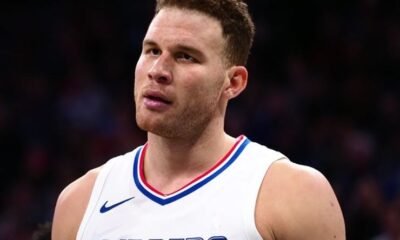NFL
NFL Salary Cap History Throughout the Years

[ad_1]
The NFL salary cap has restricted player salaries and guided roster-building for three decades. Let’s look through the year-by-year history of the salary cap before answering a few pressing questions about how the cap works.
NFL Salary Cap History
- 2023: $224,800,000 ($16,600,000 increase)
- 2022: $208,2000,000 ($25,700,000 increase)
- 2021: $182,500,000 ($15,700,000 decrease)
- 2020: $198,200,000 ($10,000,000 increase)
- 2019: $188,200,000 ($11,000,000 increase)
- 2018: $177,200,000 ($10,200,000 increase)
- 2017: $167,000,000 ($11,730,000 increase)
- 2016: $155,270,000 ($11,990,000 increase)
- 2015: $143,280,000 ($10,280,000 increase)
- 2014: $133,000,000 ($9,400,000 increase)
- 2013: $123,600,000 ($3,000,000 increase)
- 2012: $120,600,000 ($225,000 increase)
- 2011: $120,375,000
- 2010: Uncapped
- 2009: $123,000,000 ($7,000,000 increase)
- 2008: $116,000,000 ($7,000,000 increase)
- 2007: $109,000,000 ($7,000,000 increase)
- 2006: $102,000,000 ($16,500,000 increase)
- 2005: $85,500,000 ($4,918,000 increase)
- 2004: $80,582,000 ($5,575,000 increase)
- 2003: $75,007,000 ($3,906,000 increase)
- 2002: $71,101,000 ($3,696,000 increase)
- 2001: $67,405,000 ($5,233,000 increase)
- 2000: $62,172,000 ($4,884,000 increase)
- 1999: $57,288,000 ($4,900,000 increase)
- 1998: $52,388,000 ($10,934,000 increase)
- 1997: $41,454,000 ($701,000 increase)
- 1996: $40,753,000 ($3,653,000 increase)
- 1995: $37,100,000 ($2,492,000 increase)
- 1994: $34,608,000
NFL Salary Cap FAQ
When Did the NFL Salary Cap Start?
The NFL salary cap came to fruition in tandem with the beginning of NFL free agency. In 1992, the NFL was determined to have violated antitrust rules by refusing to grant players the opportunity to become free agents.
MORE: 2023 NFL Salary Cap Space by Team
The NFL and the NFL Players Association (NFLPA) eventually agreed to begin free agency in 1993. The salary cap would take effect for the 1994 season. That year, the salary cap was supposed to be $32 million per team. But after the league sold expensive television rights to networks, the inaugural cap was set at $34.608 million.
Why Was There No Salary Cap in 2010?
In 2008, NFL owners voted to opt out of their collective bargaining agreement (CBA) with the NFLPA. The CBA has historically called for an uncapped year the season before the agreement is set to expire. With owners deciding to exit the CBA in March 2011, the 2010 season had no salary cap.
The uncapped year was supposed to entice both sides to agree to a new CBA before the current agreement expired. That strategy had largely worked, as the NFL had never had an uncapped season until 2010.
Although there was no salary cap that year, most NFL teams still spent as if a cap was in place. Washington and the Dallas Cowboys spent heavily and frontloaded contracts in 2010, but the NFL eventually docked $36 million and $10 million, respectively, from their 2012 salary caps.
What is the Most Dead Cap in NFL History?
“Dead money” refers to cap charges for players no longer on a team’s roster. When a club releases or trades a player, any future guaranteed money or prorated bonus money will immediately accelerate onto the team’s salary cap. It’s an accounting mechanism that ensures NFL teams can’t overly manipulate the cap.
The Atlanta Falcons absorbed the largest single dead cap hit in history — $40.3 million — when they traded quarterback Matt Ryan to the Indianapolis Colts in 2022. Ryan signed a five-year, $150 million extension with the Falcons in 2018, and the deal had been restructured so many times that ample dead money remained when Atlanta traded him.
In 2023, the Philadelphia Eagles are projected to lead the NFL with $54.7 million in dead cap. Expiring contracts for players such as Fletcher Cox, Javon Hargrave, Isaac Seumalo, and James Bradberry will all leave dead money on the Eagles’ cap next season.
[ad_2]
Source link
NFL
Taylor Swift Is Shown Chugging a Beer on the Jumbotron at Super Bowl 58
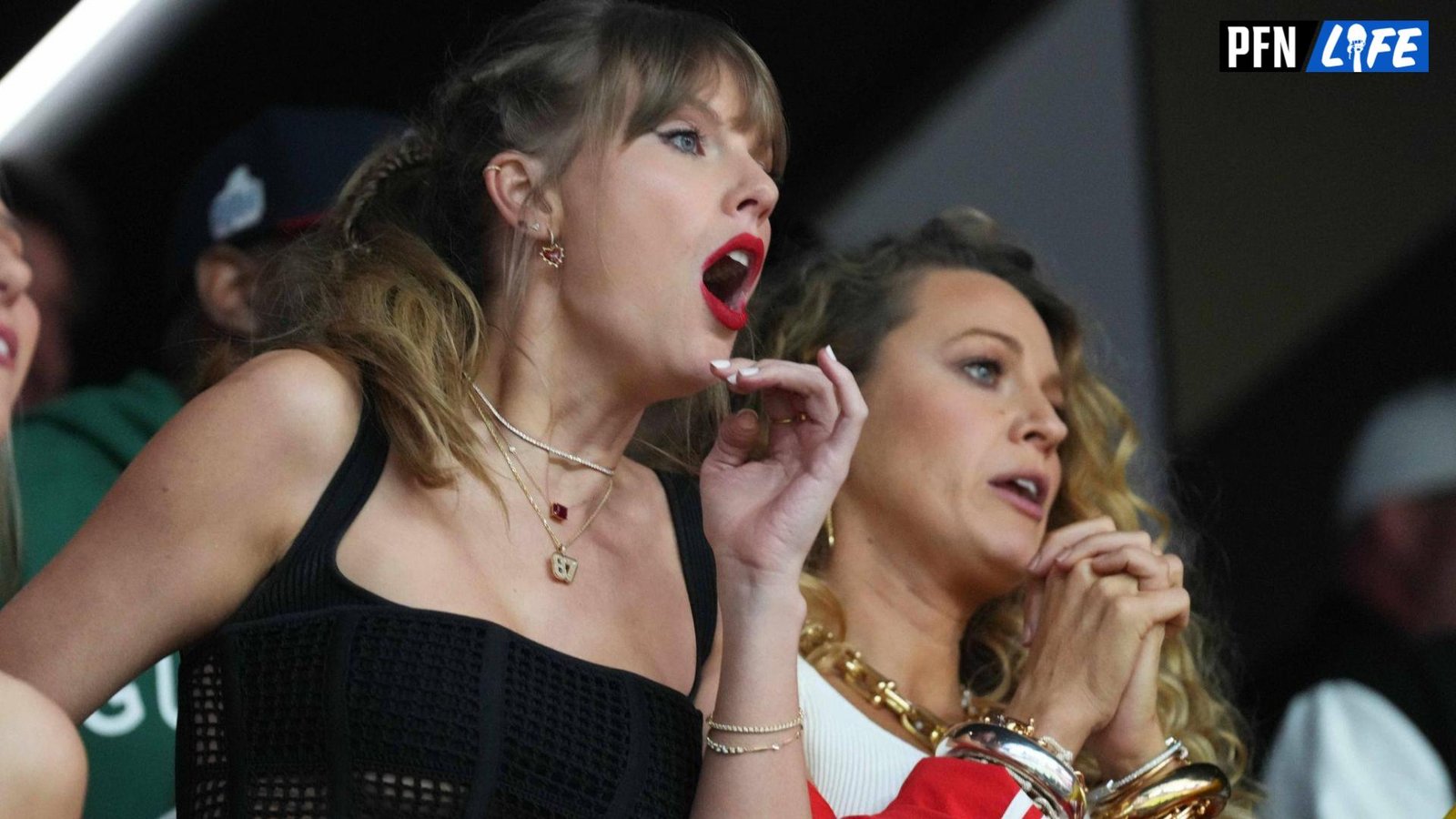
[ad_1]
Global superstar Taylor Swift made it to the big game to support her boyfriend, Kansas City Chiefs star tight end Travis Kelce. In the second quarter, it was evident that she was having a good time at the Super Bowl after taking a 12-hour flight from Tokyo the night prior.
Taylor Swift Seen Chugging Beer at Super Bowl
Swift’s attendance has been highly anticipated, as many fans questioned whether she would be able to make it to the big game since she had been in Japan until Saturday for her Eras Tour.
Sure enough, she made it to the Super Bowl and was seen making a grand entrance alongside Blake Lively and Ice Spice.
Swift made it back to the States with plenty of time to make it to Allegiant Stadium to support Kelce. After a leg of her Eras Tour, where she performed several nights in Japan, the singer appeared to let loose.
In a box full of friends, Swift was shown chugging a beer with Ashley Avignone. She was shown on the jumbotron and slammed her cup down after she finished her beer.
Legend 😂 pic.twitter.com/hk27JTAXZ9
— Pro Football Network (@PFN365) February 12, 2024
There was a mix of cheers and boos as Swift was shown on the big screen, and a long pass to Mecole Hardman was the only highlight of the first half for Swift and her friends. The 49ers led the Chiefs, 10-0, late in the second quarter.
On social media, Swift garnered plenty of support from NFL fans.
“If you’re hating on her you can kick rocks man she’s the best,” one user posted on X.
“The one thing I learned this season is that she is actually fun,” another said.
“Booing Taylor Swift chugging a beer is so soft. She’s just one of us now and I respect it ,” another posted.
At the time of the beer chugging, Kelce, Taylor Swift’s boyfriend, has had one catch for a single yard. It came on the first possession, which ended up being a three-and-out. The Kansas City Chiefs hadn’t done much otherwise.
They did have a deep pass play to Hardman, which put them in the red zone, but Isiah Pacheco fumbled on the very next play — one that Kelce was surprisingly on the sideline for.
Swift and Kelce have garnered much media attention as their romance has taken off throughout this NFL season.
Swift was able to support her boyfriend at many of his games throughout the final stretch of the season, as her Eras Tour was on a break. But starting on Feb. 7, she went back on the road.
MORE: NFL World Reacts to Unbelievable Super Bowl Trick Play
Despite performing in Tokyo the night before the Super Bowl, she was able to make it in time to support her boyfriend due to the time difference and is having a good time doing so.
As the 2023 NFL season comes to a close, the 2024 NFL Draft is on the horizon. Pro Football Network has you covered with everything from team draft needs to the Top 100 prospects available. Plus, fire up PFN’s Mock Draft Simulator to put yourself in the general manager’s seat and make all the calls!
Listen to the PFN Fantasy Podcast
Listen to the PFN Fantasy Podcast! Click the embedded player below to listen, or you can find the PFN Fantasy Podcast on iTunes, Spotify, and all major podcast platforms. Be sure to subscribe and leave us a five-star review! Rather watch instead? Check out the PFN Fantasy Podcast on our Fantasy YouTube channel.
[ad_2]
Source link
NFL
What Happened to the 49ers Linebacker?

[ad_1]
The San Francisco 49ers sustained a massive blow during the second quarter of Super Bowl 58, as linebacker Dre Greenlaw left the game on a medical cart.
CBS Sports confirmed that the veteran Greenlaw suffered an Achilles tear, ruling him out for the rest of the game against the Kansas City Chiefs.
What Happened to Dre Greenlaw?
The outside linebacker, who had already been battling past injuries to his hamstrings and calves, left with what appeared to be a leg injury.
And somehow, his left leg looked like it buckled as he tried to trot onto the field with the Niners’ defense.
#49ers LB Dre Greenlaw appeared to suffer an injury while running on the field.
— Pro Football Network (@PFN365) February 12, 2024
Greenlaw clutched his left leg in agony before being helped off the field.
CBS Sports sideline reporter Evan Washburn reported that the outside linebacker left with what was ruled as a lower leg injury. He was later determined to sustain an Achilles injury.
Greenlaw was declared out for the rest of the game.
#49ers LB Dre Greenlaw (Achilles) is now officially out for the game.
— Tom Pelissero (@TomPelissero) February 12, 2024
Greenlaw Carted Off in Passenger Seat
Even more noticeable was where Greenlaw sat on the cart.
He ended up leaving not in the back of the medical vehicle but ended up riding shotgun with his leg injury.
He can’t sit in the back? pic.twitter.com/9jpz0rdoF1
— Big Cat (@BarstoolBigCat) February 12, 2024
One would think that with an injury like an Achilles ailment, medical officials would try to make the player as comfortable as possible before they leave. It wasn’t the case here.
MORE: San Francisco 49ers Depth Chart
Regardless, Greenlaw was replaced by Demetrius Flannigan-Fowles for the rest of the first half. Greenlaw became the most significant injury of the game.
As the 2023 NFL season comes to a close, the 2024 NFL Draft is on the horizon. Pro Football Network has you covered with everything from team draft needs to the Top 100 prospects available. Plus, fire up PFN’s Mock Draft Simulator to put yourself in the general manager’s seat and make all the calls!
Listen to the PFN Fantasy Podcast
Listen to the PFN Fantasy Podcast! Click the embedded player below to listen, or you can find the PFN Fantasy Podcast on iTunes, Spotify, and all major podcast platforms. Be sure to subscribe and leave us a five-star review! Rather watch instead? Check out the PFN Fantasy Podcast on our Fantasy YouTube channel.
[ad_2]
Source link
NFL
NFL World Reacts to Epic Super Bowl Intro From CBS
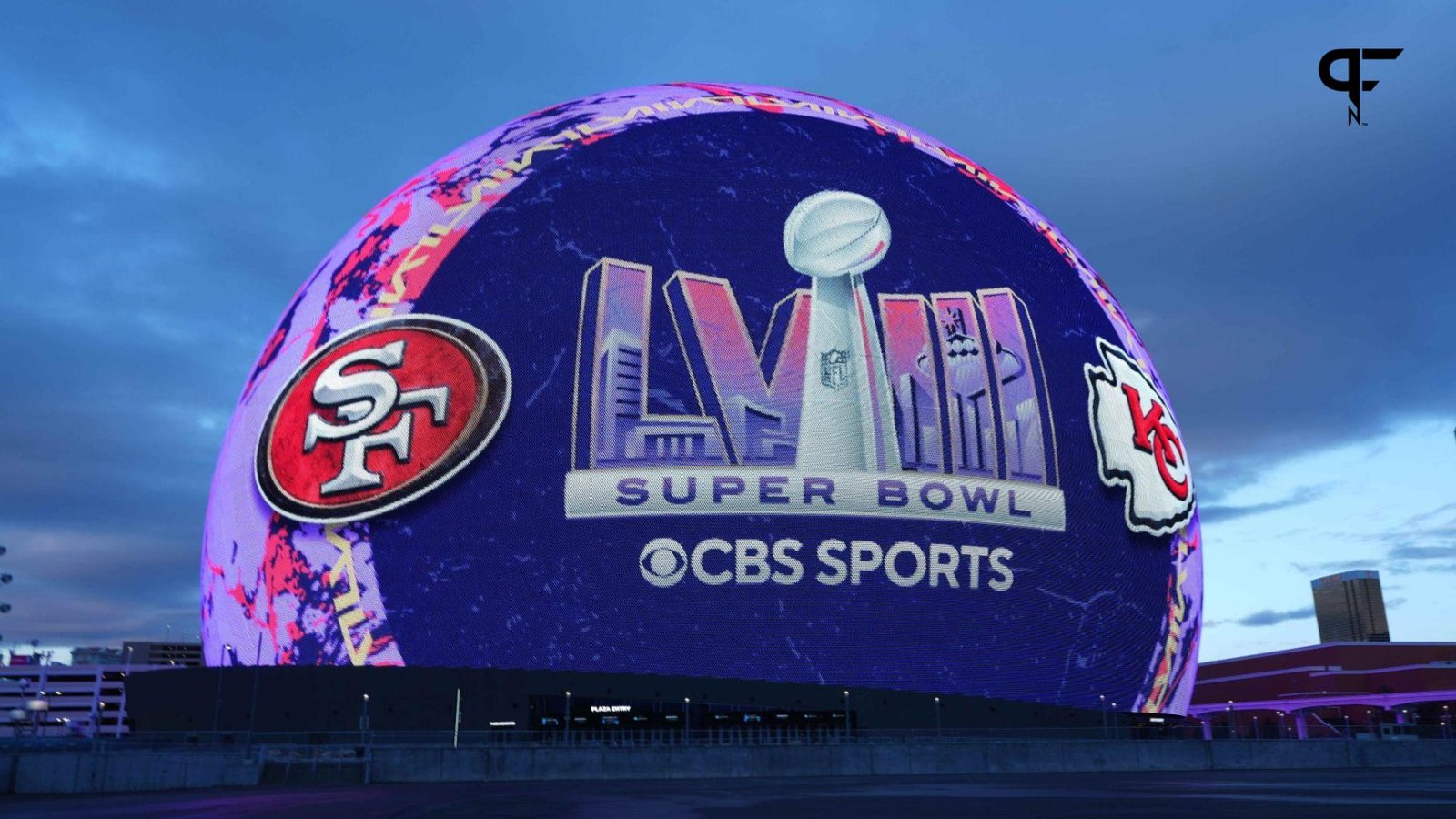
[ad_1]
Super Bowl 58 is here and it’s going to be exciting. The San Francisco 49ers and Kansas City Chiefs are facing off in the final game of 2023.
CBS is broadcasting the game and the opening was nothing short of amazing. How is the NFL world reacting to the electric Super Bowl-opening video?
Epic CBS Super Bowl Intro Garners Reaction From NFL World
The video, which spanned four minutes and 19 seconds, featured players from both teams talking about the big game and what it means to them. It also featured their families talking about their journeys to this point.
“Amazing intro! Reminds me of my dad! Bravo on the intro!,” one NFL fan said on X (formerly known as Twitter)
And now, the end is near.
And so, the @49ers and @Chiefs face that final curtain. pic.twitter.com/YgIEGOAMb1
— CBS Sports (@CBSSports) February 11, 2024
Additionally, Frank Sinatra’s “My Way” played in the background, giving it a near-movie feel. “This was incredible.,” another person said on X. “And so, the @49ers and @Chiefs face that final curtain,” CBS Sports said.
The 49ers finished the regular season as the top seed in the NFC with a 12-5 record. After their first-round bye, they defeated both the Green Bay Packers and Detroit Lions to earn their trip to Las Vegas for the Super Bowl. Both of their victories came in comeback fashion, including an NFC Championship-record 17-point comeback.
The Chiefs, on the other hand, had a more uphill battle. Entering the playoffs as the AFC’s third seed, they finished the regular season with an 11-6 record. In the playoffs, they defeated the Miami Dolphins, Buffalo Bills, and Baltimore Ravens to punch their ticket.
Super Bowl 58 is a re-match of Super Bowl 54 when the Chiefs defeated the 49ers 31-24. The win was the first in Patrick Mahomes career, as he also won Super Bowl MVP. Four years later, the Chiefs have made three more and won another. For the 49ers, this is their first trip back to the big game since.
The game kicked off at 6:30 p.m. ET with the 49ers receiving the opening kick. In addition to being broadcast on CBS, the game is also being streamed on Paramount+.
As the 2023 NFL season comes to a close, the 2024 NFL Draft is on the horizon. Pro Football Network has you covered with everything from team draft needs to the Top 100 prospects available. Plus, fire up PFN’s Mock Draft Simulator to put yourself in the general manager’s seat and make all the calls!
Listen to the PFN Fantasy Podcast
Listen to the PFN Fantasy Podcast! Click the embedded player below to listen, or you can find the PFN Fantasy Podcast on iTunes, Spotify, and all major podcast platforms. Be sure to subscribe and leave us a five-star review! Rather watch instead? Check out the PFN Fantasy Podcast on our Fantasy YouTube channel.
[ad_2]
Source link
-

 NFL2 years ago
NFL2 years agoWho are the best wide receivers still available late on Day 2?
-
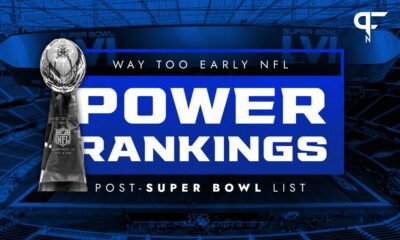
 NFL2 years ago
NFL2 years agoAFC dominates post-Super Bowl list
-

 UFC2 years ago
UFC2 years agoBREAKING : Khamzat vs Gilbert Burns UFC 273 | Usman Vs Edwards UFC 272
-

 NFL2 years ago
NFL2 years agoLos Angeles Rams salary cap situation heading into 2022
-

 NFL2 years ago
NFL2 years agoCould the Chiefs, Jets, Colts, or Patriots make a run at the former standout?
-

 Moto Gp2 years ago
Moto Gp2 years agoDOWNLOAD Game MotoGP 2021 Terbaru Ukuran Kecil Update PPSSPP Android
-

 Moto Gp2 years ago
Moto Gp2 years agoDownload MotoGP 2021/2022 Ppsspp Android Offline
-
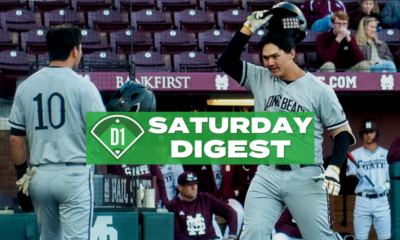
 Baseball2 years ago
Baseball2 years agoAnother Long Beach Triumph Headlines Action • D1Baseball

